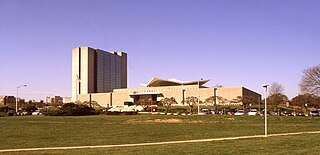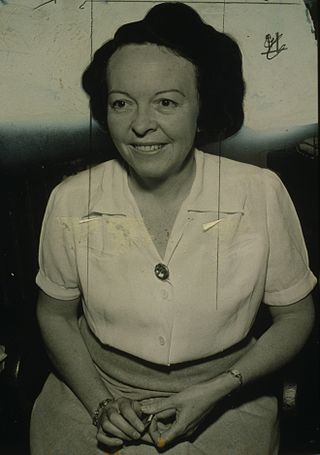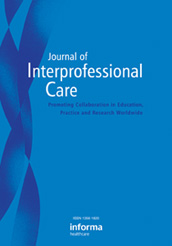
The United States National Library of Medicine (NLM), operated by the United States federal government, is the world's largest medical library.

Health education is a profession of educating people about health. Areas within this profession encompass environmental health, physical health, social health, emotional health, intellectual health, and spiritual health, as well as sexual and reproductive health education.

Aga Khan University is a non-profit institution and an agency of the Aga Khan Development Network. It was Founded in 1983 as Pakistan's first private university. Starting in 2000, the university expanded to Kenya, Tanzania, Uganda, the United Kingdom and Afghanistan.
Health promotion is, as stated in the 1986 World Health Organization (WHO) Ottawa Charter for Health Promotion, the "process of enabling people to increase control over, and to improve their health."

Health literacy is the ability to obtain, read, understand, and use healthcare information in order to make appropriate health decisions and follow instructions for treatment. There are multiple definitions of health literacy, in part, because health literacy involves both the context in which health literacy demands are made and the skills that people bring to that situation.
East Carolina University College of Health and Human Performance is an American college of Health and Human Performance. It has five departments and nine laboratories. It offers degrees in Bachelor of Science, Bachelor of Arts, Master of Arts, Master of Arts in Education, Master of Science and Ph.D..

Dorothy Bird Nyswander, was an American health educator. She graduated with masters and bachelor's degrees from the University of Nevada and a Ph.D. in Psychology from the University of California, Berkeley. She is considered the Mother of Health education.

The American Journal of Public Health is a monthly peer-reviewed public health journal published by the American Public Health Association that covers health policy and public health. The journal was established in 1911 and its stated mission is "to advance public health research, policy, practice, and education." The journal occasionally publishes themed supplements. The editor-in-chief is Alfredo Morabia.
The Californian Journal of Health Promotion is a peer-reviewed medical journal focusing on health education and health promotion practice, teaching, research, and issues of interest to professionals in California and the surrounding Western United States. The journal publishes multimedia presentations along with traditional scholarly manuscripts. It is indexed in CINAHL. As of September 2021, it has suspended all peer review activities.

Dental Public Health (DPH) is a para-clinical specialty of dentistry that deals with the prevention of oral disease and promotion of oral health. Dental public health is involved in the assessment of key dental health needs and coming up with effective solutions to improve the dental health of populations rather than individuals.
Human development involves studies of the human condition with its core being the capability approach. The inequality adjusted Human Development Index is used as a way of measuring actual progress in human development by the United Nations. It is an alternative approach to a single focus on economic growth, and focused more on social justice, as a way of understanding progress
Health communication is the study and practice of communicating promotional health information, such as in public health campaigns, health education, and between doctor and patient. The purpose of disseminating health information is to influence personal health choices by improving health literacy. Health communication is a unique niche in healthcare that allows professionals to use communication strategies to inform and influence decisions and actions of the public to improve health.

The Journal of Interprofessional Care is a bimonthly peer-reviewed medical journal that covers education, practice, and research in health and social care.
Nutrition education is a set of learning experiences designed to assist in healthy eating choices and other nutrition-related behavior. It includes any combination of educational strategies, accompanied by environmental supports, designed to facilitate voluntary adoption of food choices and other food and nutrition-related behaviors conducive to health and well-being. Nutrition education is delivered through multiple venues and involves activities at the individual, community, and policy levels. Nutrition Education also critically looks at issues such as food security, food literacy, and food sustainability.
The PRECEDE–PROCEED model is a cost–benefit evaluation framework proposed in 1974 by Lawrence W. Green that can help health program planners, policy makers and other evaluators, analyze situations and design health programs efficiently. It provides a comprehensive structure for assessing health and quality of life needs, and for designing, implementing and evaluating health promotion and other public health programs to meet those needs. One purpose and guiding principle of the PRECEDE–PROCEED model is to direct initial attention to outcomes, rather than inputs. It guides planners through a process that starts with desired outcomes and then works backwards in the causal chain to identify a mix of strategies for achieving those objectives. A fundamental assumption of the model is the active participation of its intended audience — that is, that the participants ("consumers") will take an active part in defining their own problems, establishing their goals and developing their solutions.

School hygiene or school hygiene education is a healthcare science, a form of the wider school health education. The primary aims of school hygiene education is to improve behavior through useful practices connected to personal, water, food, domestic and public hygiene. Also, it aims to protect water and food supplies and to safely manage environmental factors.
Global Health Promotion is a quarterly peer-reviewed public health journal that covers health promotion and health education. The editor-in-chief is Suzanne Jackson. It was established in 1994 and is currently published by SAGE Publications on behalf of International Union for Health Promotion and Education.
Workplace health promotion is the combined efforts of employers, employees, and society to improve the mental and physical health and well-being of people at work. The term workplace health promotion denotes a comprehensive analysis and design of human and organizational work levels with the strategic aim of developing and improving health resources in an enterprise. The World Health Organization has prioritized the workplace as a setting for health promotion because of the large potential audience and influence on all spheres of a person's life. The Luxembourg Declaration provides that health and well-being of employees at work can be achieved through a combination of:
Public health nursing, also known as community health nursing is a nursing specialty focused on public health. The term was coined by Lillian Wald of the Henry Street Settlement, or, Public health nurses (PHNs) or community health nurses "integrate community involvement and knowledge about the entire population with personal, clinical understandings of the health and illness experiences of individuals and families within the population." Public health nursing in the United States traces back to a nurse named Lillian Wald who, in 1893, established the Henry Street Settlement in New York City and coined the expression "public health nurse". A Public or Community Health Nurse is expected to comply with the duties and limitations of the American Nurse Association (ANA) publication Public Health Nursing: Scope and Standards of Practice.

John C. Greene was an American dentist and public health administrator. He was a rear admiral in the U.S. Public Health Service Commissioned Corps, and served as the Deputy Surgeon General of the United States under President Carter from 1978 to 1981. He was the Acting Surgeon General from January to May 1981 under Ronald Reagan. He was the highest ranking non-physician public health officer in the history of the U.S. government.









